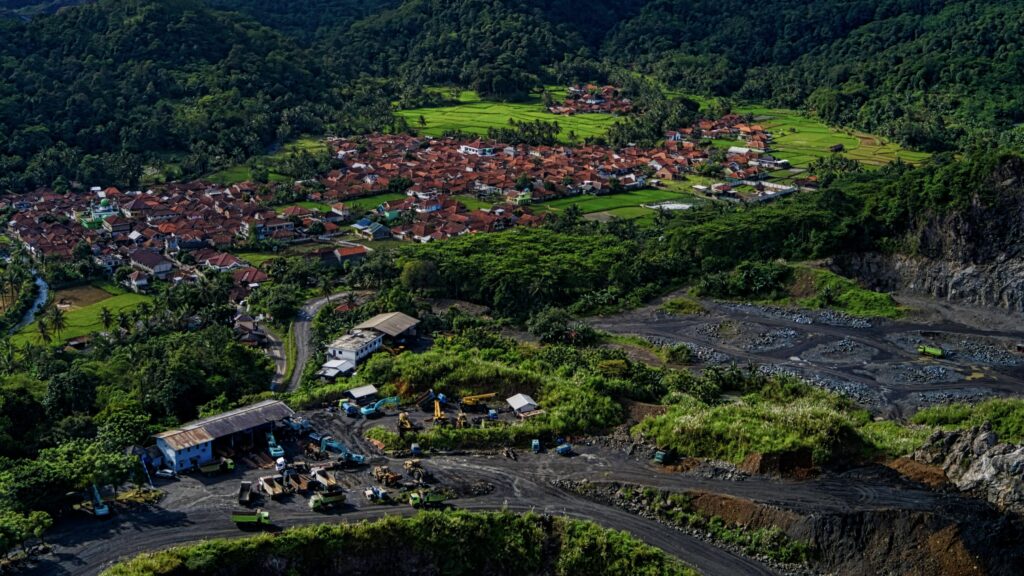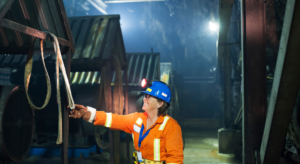Mining operations have historically left scarred landscapes/ degraded ecosystems. It challenges the industry to create rehabilitation options. Modern land reclamation represents a paradigm shift from old rehabilitative methods to whole-ecosystem restoration. New biotechnology, engineering accuracy, and clean technologies enable mining operators to reclaim disturbed land as productive landscapes with sustainable biological communities. These technologies satisfy regulatory needs while creating long-term economic and environmental returns. This article considers innovative land reclamation technologies, new restoration practices, and upcoming innovations that are enhancing sustainable mining.
Land Reclamation in Mining: Biotechnological Advances in Soil Restoration
Biotechnological advancements have revolutionized soil reclamation using microbial engineering and biological enrichment methods. These methods offer solutions to key challenges in land pollution rehabilitation and supplementing mineral nutrients to the land. This section discusses new biological treatments that are driving the redevelopment of ravaged mining areas to productive land:
Microbial Inoculation Techniques
Favorable microbes play critical functions in remineralizing healthy soil through recycling nutrients and destroying contaminants. Furthermore, advanced inoculation processes introduce precisely selected communities of fungal and bacterial groups. These enhance processes in natural soil formation. These microbes trigger the decomposition of organic matter, stabilize the soil structure, and form symbiotic relationships with plants.
Moreover, lab-made microbial consortia are made with specific site conditions in mind. It enhances efficiency and survival. The technology further promotes chemical fertilizer dependency minimization and sustainable ecosystem development. New methods of application include liquid inoculants, granular materials, and seed coating approaches. It aids in the wide delivery of microbes to the mining reclamation sites.
Mycorrhizal Network Establishment
Mycorrhizal fungi form required relationships with the roots of plants. This forms extensive networks that facilitate water and nutrient access. Furthermore, novel application methods include inoculation of certain fungal species suited for the conditions of mining reclamation lands and target vegetation types. These networks greatly enhance the survival of plants under stress and reduce irrigation and fertilization requirements.
In addition, scientists have presented specific ways of inoculation with encapsulated spores and root dipping regimes to guarantee fungal colonization. Mycorrhizal products are formulated in various formulations in the form of granules, powders, and liquid concentrates and are available for sale in the market. So, this biological process presents self-sustaining ecosystems that continue to improve soil conditions for decades.
Bioremediation Using Engineered Organisms
Genetically engineered organisms offer a special solution to a specific contamination problem found in the mine environment. Fungi and microbes are engineered biologically to break down heavy metals, absorb toxicants, and neutralize acidic conditions found in mine wastes. Furthermore, these can tolerate stressful environmental conditions while actively engaging in soil chemistry via metabolic processes.
On top of that, bioengineered solutions include alternatives such as microbes that break down hydrocarbons, acid-neutralizing microbes, and plants that accumulate metals. Additionally, research facilities develop certain microorganisms on the basis of onsite specific contamination profiles and environmental elements. Controlled utilization and environmental surveillance by safety protocols also make biotechnology an appropriate method for complex land restoration issues.
Organic Amendment Integration
Organic matter serves as the basis components in the biological reclamation of soil. It provides nutrients and keeps microbial populations in balance. Furthermore, modern methods include composted organic wastes, biochar, and carefully formulated organic amendments, facilitating soil texture and water holding capacity. These products create ideal environments for favorable microbes and release nutrients slowly over a duration of time to fuel plant growth.
Moreover, novel composting methods produce amendments containing a fixed amount of nutrients according to land reclamation specifications. Biochar amendments sequester carbon in soil and provide a stable habitat for microbial communities. Additionally, integration solutions consist of blending several organic media with biologically active inoculants. It develops integrated systems of soil restoration that work best under different mining conditions.
Innovative Land Reclamation Techniques in Mining: Engineering Solutions
Physical reconstruction of the landscape requires top-down engineering solutions depending on topography, hydrology, and strength. Modern techniques apply new materials and precision techniques to establish sustainable landforms. This section outlines new engineering techniques that are changing the landscape rehabilitation in the mining sector:
Precision Grading and Contouring
Advanced survey technology allows successful land restoration with natural topography and drainage simulation. Furthermore, GPS-steered equipment and laser-grading machines create the correct slopes and levels for water to move correctly and to protect from erosion. Three-dimensional modeling software enables engineers to create the landforms that integrate seamlessly with surrounding features.
Subtle contouring techniques produce microtopography. It provides diverse vegetation communities and wildlife habitats. Moreover, premium-grade grading equipment can attain centimeter-class accuracy in slope building and surface grading. These methods also ensure long-term stability of the landscape with aesthetically pleasing outcomes. It blends harmoniously with ground structures and supports the sustainable development of ecosystems.
Geotechnical Stabilization Methods
Soil and rock stabilization techniques reduce erosion and ensure the longer-term structural stability of land reclamation. Besides, geosynthetics such as geotextiles, geogrids, and geocells stabilize steep slopes and loose ground slopes. Chemical processes for soil stabilization involve forming a weather-resistant cohesive material using binders and polymers.
Additionally, the mechanical processes of stabilization include terracing, rock placement, and the use of retaining walls. It provides instant protection for slopes. Advanced anchorage systems secure loose material and stop mass movement under extreme weather conditions. As a consequence, these processes provide a stable ground to support vegetation growth. It also protects the surrounding land from erosion and sedimentation problems that might impact other neighboring ecosystems.
Hydrological System Design
Water management structures are critical components of successful land reclamation schemes. It controls groundwater and surface runoff. Furthermore, engineered wetlands purify polluted runoff and provide a valuable wildlife habitat. Advanced drainage networks prevent waterlogging and provide clean water to appropriate outlets. Moreover, infiltration systems cause recharging of groundwater with the removal of naturally occurring contaminants.
Modern hydrological planning incorporates climate data and extreme weather occurrences to make the system enduring. Smart monitoring also allows for real-time measurement of water flow rates and quality to inform adaptive management. So, water management practices such as these result in self-replenishing hydrological cycles. These support a variety of ecosystems and prevent downstream water resources from becoming polluted.
Advanced Material Applications
Innovative materials enhance the effectiveness of land reclamation through better durability and environmental performance. Furthermore, biodegradable erosion control fabrics provide temporary protection during the establishment of permanent plant cover. Smart materials respond to environmental stimuli, offering nutrients or pH levels when needed. Moreover, recycled materials from industrial process wastes make inexpensive, mass-produced solutions.
Nanotechnology applications consist of slow-release fertilizers and targeted soil amendments. These offer the highest yield and smallest environmental impact. In addition, composite materials combine a variety of functions. It includes erosion protection, seed germination promotion, and the delivery of nutrients. These innovations reduce project cost and improve land reclamation outcomes with better performance and fewer maintenance requirements in the long term.
Sustainable Post-Mining Land Use Solutions: Ecological Restoration and Biodiversity Enhancement
Successful land reclamation in mining is more than revegetation. It encompasses large-scale ecosystem restoration with the creation of a complex array of biological communities. Modern practices revolve around the creation of self-sustaining habitats having long-term ecological value. This section explores methods of creating successful ecosystems in ex-mining sites:
Native Species Reestablishment
Native plant communities are the key to effective ecological restoration through the provision of appropriate habitat and food resources for indigenous wildlife. Further, seed collection programs maintain indigenous genetic diversity and plant material adapted to local climatic circumstances. Propagation techniques consist of direct seeding, transplant establishment, and assisted migration practice responding to environmental change.
Moreover, local vegetation suitable for land reclamation and having adequate rootstock and hardiness traits is provided via nursery cooperatives. Phases of planting establish pioneer species first, followed by late-succession plants that make complex community formations. So, these approaches restore the natural plant communities. These support the local biodiversity while needing minimal long-term maintenance once established.
Wildlife Habitat Creation
Habitat design consists of specific elements that attract and support target wildlife species. It includes nesting habitat, food, and migration corridors. The structural complexity offers multiple niche habitats through variation in plant height, opportunities for open space, or cover. Further, water bodies like ponds, streams, & seasonal wetlands provide the required resources for amphibians, birds, and mammals.
Dead trees, brush piles, and rock piles serve as microhabitats for reptiles/ small mammals/ insects. Additionally, connectivity planning links recovered sites to adjacent natural habitat for animal movement and genetic interaction by wildlife. Wildlife colonization and habitat use are also documented by monitoring programs. It helps to inform adaptive management choices that optimize habitat benefits.
Pollinator Support Systems
Pollinator habitats require diversified flowering plants with nectar and pollen year-round. Native wildflower meadows support bee, butterfly, and other pollinator associations for ecosystem processes. Furthermore, targeted plantings consist of early-blooming flowers to enable spring emergence and late-flowering blossoms for fall migration assistance. Moreover, native bees use nesting habitat features like bare soil patches, plant stems, and wood debris as breeding grounds.
Chemical-free management guarantees the well-being of pollinators. This is while controlling invasive species with mechanical and biological control methods. Integration with conservation groups and beekeeping clubs promotes pollinator support. This is through professional-level management approaches and population monitoring programs assessing well-being and diversity.
Long-term Ecosystem Monitoring
Monitoring programs track ecosystem restoration performance using more than one indicator. It includes plant community development, soil quality, and animal populations. Further, remote sensing methods provide landscape-scale monitoring capability that augments ground surveys and data collection. Adaptive management approaches allow course correction based on monitoring results and changing environmental conditions.
Moreover, citizen science programs engage the local communities in the activities of monitoring while creating support for the effort in conservation. Additionally, database systems compile long-term data that informs future land restoration projects and advances scientific understanding of restoration ecology. So, these monitoring tactics cause investments made in land reclamation to pay off in terms of desired ecological results and provide useful inputs for future development in the restoration process.
To Sum Up
Land reclamation innovation continues to advance by combining biological, engineering, and ecological practices. These transform the impacts of mining into ecological wealth. Biotechnological processes also accelerate the soil restoration while engineering measures develop solid ground appropriate for productive ecosystems. New technologies hold out the prospect of even more sophisticated equipment to solve challenging reclamation problems and create permanent environmental solutions.
The incorporation of innovative restoration technologies into mining firms’ practices is a pointer to forward-looking environmental practice in mining with emphasis on long-term environmental stewardship. Make sure you attend future mining conferences among industry players to keep up with the future innovations and best practices determining the future of sustainable resource recovery and restoration.





